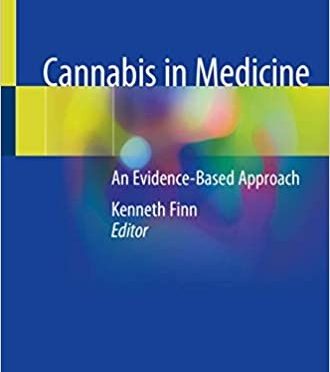A distinguished group of doctors, scientists and academics present the latest research in Cannabis in Medicine: An Evidence-Based Approach. Dr. Kenneth Finn, a professional advisor to Parents Opposed to Pot, edited the book and Springer, a prominent medical textbook company, published the book in July, 2020.
In recent years, marijuana has grown exponentially stronger and the science on its effects has grown more robust. Between 2011 and 2019, 15,269 marijuana-related manuscripts were published in biomedical literature. The notions that the Schedule I designation of marijuana prevents research, and that we need a MORE Act to allow research, are false. As the drug grows more potent, its damaging effects become more obvious, too.
This dense paperback volume of 540+ pages puts to rest any claims that “cannabis as medicine” has not been studied enough. The comprehensive resource outlines the medical literature for several organ systems. Comprised of case studies and meta-analysis, the new book will be an enormous help to doctors and clinicians. The book is easy enough for the general public to read, but heavily documented with important bibliographic sources.
Specific chapters and areas of concern
Chemist Richard Hilderbrand writes the opening chapter on the chemical properties of cannabis. He points out the differences between CBD derived from marijuana and CBD derived from hemp.
In the next chapter, Harvard psychologist Dr. Bertha Madras, an addictions specialist, explains the endocannabinoid system in detail. Chapter 3 considers interactions of cannabinoids with other drugs, a factor poorly understood by state medical marijuana programs.
A large portion of the book, fully 65 pages, comprises information about the psychiatric effects. The book includes up-to-date information on marijuana and suicide, and marijuana use by pregnant and breast-feeding women. Dr. George Wang, a Colorado doctor, leads a team of doctors who write about pediatric presentations.
Dr. Karen Randall and Dr. Brad Roberts, doctors in Pueblo, Colorado, who have written previously for us, write an important chapter on marijuana in emergency medicine. They discuss the best treatments for acute psychosis and cannabinoid-hyperemesis syndrome.
Pot enthusiasts market marijuana as pain treatment, the most common condition for medical marijuana. However, Chapter 7 gives comprehensive review on various types of pain, and finds that cannabis does not produce positive effects for anything other than neuropathic pain.
Does marijuana help in oncology and symptom management in cancer? Chapter 13 treats this issue. Chapter 14 treats the subject of palliative medicine, which shows the most promise of any targeted conditions.
Other chapters review the impact on the cardiovascular system, pulmonary medicine, dermatology and gastrointestinal disorders. Two University of Oklahoma ophthalmologists wrote a chapter on ocular conditions and the endocannabinoid system, since glaucoma was one of the first conditions targeted by medical marijuana advocates.
Side effects and wider public health considerations
While all physicians strive to practice evidence-based medicine, many clinicians aren’t aware of the facts surrounding cannabis, and its many potential side effects and interactions with other medicines. Cannabis as Medicine: An Evidence-Based Approach provides clinicians with concise guide to various health concerns.
By addressing non-medical concerns too, this book also serves as a resource for professionals in the public health and legal fields. Please write your representatives in Congress and ask him or her to oppose the MORE Act.

